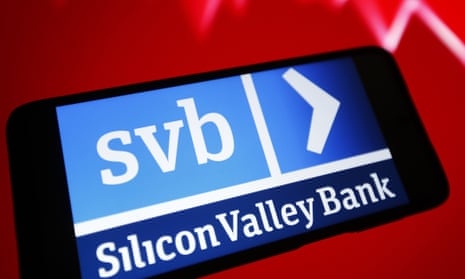Silicon Valley Bank’s name isn’t just hollow branding. Founded in Santa Clara in the 1980s, in the heart of the Bay Area’s tech cluster, it was a regional bank that served the local economy.
As that local economy became the engine of American growth, SVB – which collapsed on Friday – grew alongside it. It remained a tech specialist, a limitation that allowed it to continue to be regulated as a regional bank and so avoid the stricter requirements piled on larger competitors, but otherwise spread across the US and the world.
In 2022, the UK branch was required to become a subsidiary bank in its own right, after it hit a threshold of £100m of insured deposits. In absolute numbers that’s comparatively small: in the UK, the first £85,000 deposited is covered by insurance, so SVB could have hit it with only a couple of thousand clients.
But in the UK, as in the US, those small businesses were unique. The bank specialised in high-growth startups, solving problems that other banks wouldn’t touch. A company with barely any revenue and only a few months of accounts to its name would struggle to open a corporate account, let alone access complex financial services. One venture capitalist described trying to open a bank account for a portfolio company at Barclays and being told they were limited to a debit card, a chequebook, and a single director – even while the company itself had 10 employees and a huge cash investment waiting to be spent.
Early-stage startups have other unique characteristics, all of which SVB turned itself to serving. They take large sums of money and then sit on them for months or years, slowly spending them down as they grow larger and larger. Unlike typical small businesses, they don’t tend to be interested in business loans, and may not even bring in any revenue for years after they begin paying staff.
Focusing on those odd customers allowed SVB’s UK branch to balloon to almost £7bn in deposits by Friday, according to the Financial Times. By one estimate, the bank served between a third and a half of the UK’s “innovation economy”.
But that concentration had a downside. SVB’s customers were unique in the wider world but very similar to each other: a collection of extremely online individuals, with purse strings controlled by an even smaller group of influential venture capitalists. As the bank stumbled over the last week, some venture capitalists quietly advised their portfolio companies to get their money out; others, rather more noisily, turned to Twitter to do the same.
Banks are required to keep “risk-adjusted” liquid capital on hand to prevent a bank run from becoming a bank failure but the risk assessments make assumptions that are laughably 20th century, like days rather than minutes for a bank transfer to be completed, or assuming that customers are unable to easily coordinate with each other in huge numbers. Some have called for a new regulatory metric: the “social media risk adjustment”, which takes account of how many of your customers are in the same Twitter timelines as each other.
Compared with the scale of “big tech”, the numbers may seem small. Mark Zuckerberg can lose $10bn (£8.3bn) a quarter to build a virtual reality version of Second Life, after all. But big tech isn’t a protective shield for the innovation economy: it’s the lumbering giants that startups are trying to bring down. They may swoop in and buy up a failed startup in a fire sale but absent a few giveaways such as Amazon Web Services extending credit on cloud bills, they won’t be the knights in shining armour.
after newsletter promotion
Instead, it’s the venture capital firms who would normally provide funding to help firms in temporary cashflow difficulties. But there’s just one final problem. A number of them are currently unable to access their funds, because of the collapse of their chosen banking partner: Silicon Valley Bank.










